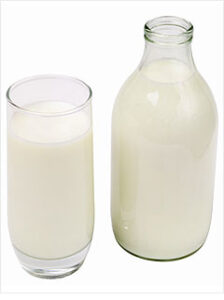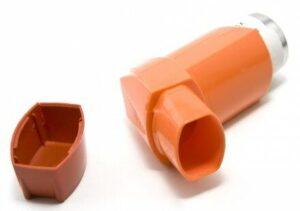It is a long established fact that a reader will be distracted by the readable content of a page when looking at its layout.

When you have asthma, your airways are sensitive, and they react to allergens (substances that induce an allergic reaction), infections, cold or humid weather, exercise, and air pollution like cigarette smoke or car exhaust fumes.
These factors cause airways to constrict, swell on the inside (inflammation), and generate even more mucus.
As a result, your airways narrow, making it difficult to get air into your lungs and even more difficult to get air out.
Asthma affects up to 1 in 7 children and 1 in 8 adults in New Zealand, making it one of the highest rates in the world. According to the New Zealand Medical Journal, New Zealand ranked 30th out of 38 OECD countries for its rate of avoidable adult asthma hospital admissions in 2019.
Understanding asthma, what causes it, and how it’s treated can help you avoid triggers and manage your symptoms.
This article will focus on the causes and conventional treatment of asthma. In the second article I’ll be talking about natural medicine solutions and in addition go more into the Buteyko Method of breathing. I’ll give you a few real case studies along the way.
With a positive change in an asthmatic’s lifestyle, environment and diet, an improvement in their immunity and digestion along with a few simple techniques to assist breathing and relaxation, most asthmatics can dramatically reduce their need and physical dependence on all their prescribed drugs.
I can assure you, after seeing many asthmatics over time as patients it has been a pleasure to see many improve with plenty of encouragement and explain that they are not necessarily dependent all their life on medications.
Conventional medicine has not coped well at all with asthma in the 21st century. The number and availability of drugs to treat the disease have been sharply increasing along with the incidence of asthma. I could not help wishing that there was another way of helping a person control their asthma, instead of having to always fall back and rely of inhalers which they have been prescribed.
 Unfortunately, asthma is one of those health problems not unlike heart disease, which often strikes fear and anxiety with the person who has been medically diagnosed with it, or their caregivers.
Unfortunately, asthma is one of those health problems not unlike heart disease, which often strikes fear and anxiety with the person who has been medically diagnosed with it, or their caregivers.
And because these conditions are often driven by fear, the patient will carry their puffer believing that they are the victim afflicted with a terrible disease and need to continually rely on their drugs. Whilst it is true that a few people may actually die of a severe and acute asthma attack, the reality is this very rarely occurs and most asthmatics, in spite of what they have been told, many can reduce their dependency on puffers, both bronchodilators and the “preventatives”. I never use the cure word, but have seen more than a few asthmatics discontinue drugs entirely as their overall health improves.
And, the more they reduce their reliance of drugs and gain confidence with breathing and living naturally, the stronger their lung function will become. Over time, many have a significantly reduced need to rely on medications except in conditions like mid winter with house fires burning, extreme humidity or for example strenuous exercise in a severe case. In time, even the most anxiety prone asthmatic can learn to become a very confident individual.
Chronic conditions like asthma are best tackled as a team approach treatment plan, whereby the doctor works alongside natural health care professionals.
Asthmatics that only go every now and then for renewed prescriptions of their puffers at medical centres are missing the boat, they need education. I have not yet met a patient who cannot improve their lung function significantly, but I have met plenty of adults who were so gripped with fear that they carry a puffer in their pocket, handbag and possibly also in the glove box of their car and use it at the very first sign of any breathing discomfort, in case they have an “attack”.
Have you noticed how TV drug advertisements encourage puffer use? All you have to do is turn off the television and keep it off and you will have an enormous blanket of protection from drug companies. Marketing works, there is no question about it, and drug companies spent over 2.5 billion US dollars globally last year to convince you to take their potions. This kind of money wasting even leaves me gasping for breath.
 Most asthma sufferers will take medicine daily in the form of an asthma, a bronchodilator spray (Salbutamol) as well as a “preventative” inhaler (suppressing steroid), designed to open their airways easier. Little attention is paid to any likely cause, with the primary emphasis on symptomatic treatment.
Most asthma sufferers will take medicine daily in the form of an asthma, a bronchodilator spray (Salbutamol) as well as a “preventative” inhaler (suppressing steroid), designed to open their airways easier. Little attention is paid to any likely cause, with the primary emphasis on symptomatic treatment.
Having a closer look at what makes an asthmatic better or worse will give you some valuable clues in helping to establish the cause in a person. It makes sense, that if you can establish a cause then you should be able to improve that person simply by modifying or even better by removing it, if possible. Is their asthma made worse by environmental triggers such as pollens, cold air, cat or horse fur, dust mites (use a powerful vacuum cleaner) or perhaps an emotional trigger?
Do the person have any other immune problems associated such as food allergies, recurring ear, nose or throat or chest problems? Careful history taking will be most important to establish the most likely asthma triggers. You will find that certain triggers (probable causes) will be more particular to some people than others. Does their asthma occur mostly indoors or outdoors? Have you noticed that the person has a wheeze in the presence of another person in particular, like a family member or friend? Strong emotions, stress and even depression can trigger asthma according to research.
 Emotional stress induces an asthma attack directly by converting that thought you have of somebody not nice to a nervous impulse which can release a hormone called adrenalin. Adrenalin is produced by the adrenal gland and is one of the most powerful hormones your body makes is released in response to any stress.
Emotional stress induces an asthma attack directly by converting that thought you have of somebody not nice to a nervous impulse which can release a hormone called adrenalin. Adrenalin is produced by the adrenal gland and is one of the most powerful hormones your body makes is released in response to any stress.
It sets to work immediately by way of increasing the heart rate and breathing rate. As the stress continues but becomes low grade and continual over time, another adrenal hormone called cortisol begins to adversely affect the body.
The immune system now becomes less effective and fatigue develops with chest infections become more common place. This is when antibiotics come into the picture, making the person weaker and even more reliant on medications.
I’m sure more than one asthma attack was caused by an argumentative family member coming over at Christmas or birthdays!
 Many years ago I saw a nine year old boy in my clinic who only developed a cough and wheeze when he was at his father’s house each weekend, but when he stayed with his mother he was fine. Buteyko breathing and homeopathy helped this young fellow significantly and offered prompt relief for a sensitive boy with emotional induced breathing difficulties. His mother said that his anxiety had greatly diminished and that the breathing exercises worked very well.
Many years ago I saw a nine year old boy in my clinic who only developed a cough and wheeze when he was at his father’s house each weekend, but when he stayed with his mother he was fine. Buteyko breathing and homeopathy helped this young fellow significantly and offered prompt relief for a sensitive boy with emotional induced breathing difficulties. His mother said that his anxiety had greatly diminished and that the breathing exercises worked very well.
 The Jewish Mother
The Jewish Mother I have a Jewish Aunt living in Holland who managed to have her son hyper-ventilate on his wedding day due to her snide remarks about the bride, after she helped herself to the champagne. Many of us will know of a family member or friend who seems to have the uncanny knack to bring out the worst in somebody or who can really get on your nerves at times. Is asthma worse i a particular person’s presence? It’s common.
 Pesticides
PesticidesI can remember an 18 yr old delicatessen assistant with chronic asthma coming to see me. She worked in a major supermarket in and told me that her asthma was particularly bad first thing in the morning, but improved somewhat as the day progressed. With some detective work I found out that there were several pesticide cans in her working environment which appeared at night from behind screens and were automatically programmed to spray short bursts of pesticides every few minutes. You never see any bugs in a supermarket, do you? They were switched off just before opening time, not long before she started to work. Her “asthma” has dramatically improved and virtually disappeared since she left to work elsewhere.
 Pollen
PollenIs the person is worse during a particular season, especially spring or fall (autumn) suspect pollen. Look at when those antihistamine commercials appear on television, which will give you a good clue as they seem to target their marketing around peak pollen times.
 Food Allergies
Food AllergiesAn important point is to always be on the lookout for any food allergies, and you will see why later, because the more severe the asthma, the more likely that a highly allergic food in the person’s diet may well be underpinning the asthma and itself is likely to be one of the primary triggers. By removing the offending food the person’s immunity improves and so does their asthma. Many asthma cases I have seen on occasions have been brought on by emotional states, and here are three examples.
 Cigarette Smoking and Emotional Stress
Cigarette Smoking and Emotional StressA 38yr old builder I saw years ago as a patient was taking up to 20 puffs a day on his bronchodilator. He had asthma as a child which he grew out of, but his asthma now was brought on after he separated from his wife and daughter.
His breathing, cough and wheeze was particularly bad on the job and a lot worse in winter with the cold early morning starts. He smoked about 5 cigarettes a day and was continually developing sore throats and chest infections. Is it any wonder? A combination of smoking cigarettes and puffers would really irritate the delicate respiratory tract.
I finally persuaded Gary to quit with the help of a hypnotherapist and we got him into a healthy eating regime and I also took him along to a Toastmasters meeting one evening which has boosted his flagging self-esteem and got him out and in front of people after his separation. I saw Gary at a local swimming pool this summer and he has not had one puff of any drug or cigarette for over two years and told me quite excited that he could now go for early morning runs when previously he had difficulty even climbing a ladder. His self esteem is great and he has a new lady friend too.
 Another case, an elderly woman who developed asthma suddenly after her husband passed away. Glenys was too frail to stay at home and was consequently moved into a retirement village by her highly irritated daughter, who going through menopause and a divorce herself. Once elderly Glenys became more involved with committee work at the retirement village, her asthma eased off.
Another case, an elderly woman who developed asthma suddenly after her husband passed away. Glenys was too frail to stay at home and was consequently moved into a retirement village by her highly irritated daughter, who going through menopause and a divorce herself. Once elderly Glenys became more involved with committee work at the retirement village, her asthma eased off.
Glenys is a very social person and felt depressed and alienated when she was first placed from her family home of more than fifty years into the retirement village. Once she became occupied with other people, her asthma which also drew attention from others no longer served a purpose.
A good approach with asthma is to always look at the emotional as well as environmental stimuli that set off a response from the person’s super sensitive airways. There are many drug-free ways to help a person who suffers from grief, shock, stress, or a range of emotions which can affect the breathing response. A natural medicine practitioner is a bit like a detective, a case taken very well is a case half solved. If you have asthma, then what are your triggers, have you worked any of them out yet?
 More than 200 different occupational asthma triggers are documented in the medical literature. Think about the adverse effects of active or passive tobacco smoke, it is also advisable for certain cases to avoid dust or fumes of chemicals, paints or sprays, exposures to people who have respiratory infections, very cold air or sudden changes in air temperatures, known inhalant allergens such as cats or dogs, grasses or pollens.
More than 200 different occupational asthma triggers are documented in the medical literature. Think about the adverse effects of active or passive tobacco smoke, it is also advisable for certain cases to avoid dust or fumes of chemicals, paints or sprays, exposures to people who have respiratory infections, very cold air or sudden changes in air temperatures, known inhalant allergens such as cats or dogs, grasses or pollens.
The concept of total body burden of toxic and allergy factors is important here, and to prevent and treat asthma attacks, the goal is to reduce exposure to toxic and allergenic substances as much as possible to lower the total body burden.
Heavy metals and spray residues, food additives and common household chemicals such as cleaners add to this burden. Isn’t that spray type oven cleaner is a real beauty, it makes me wheeze just thinking about it. You can now begin to see that the asthmatic needs an approach which ideally addresses many more factors than conventional medicine alone can offer.
A 2014 study concludes: “Epidemiological research suggests that exposure to environmental toxins (such as pesticides, solvents, and air pollutants) is associated with an increased prevalence of asthma and allergies.”
Pharmaceutical drugs such as the beta blockers, ace inhibitors, aspirin and certain non-steroidal anti-inflammatory drugs (NSAIDS) are linked as asthma triggers as well. Once allergens (any immune triggers) have been identified, measures recommended are minimising exposure to them and keeping indoor humidity levels between 40% – 50 %, as well as reducing pollen and mould exposure.
 Home Ventilation
Home VentilationThe home ventilation systems are fabulous for the asthmatic. For the bad asthma cases, it is probably best to entirely eliminate carpeting and upholstery when possible and using plastic pillow and mattress casings which will really help to keep dust exposure to a minimum. Watch out for dust mites, and have the bedding which you can’t wash professionally laundered. Wooden floorboards are best, and rugs can be taken out regularly and cleaned. Adding a teaspoon of kerosene to the bucket of water you clean the floorboards with will keep dust mites at bay and make the floor clean and shiny, an old trick I learned from a Aussie doctor who swore by this method.
Scientists have found a link between food allergies and asthma attacks in children. It’s the first time doctors have been able to highlight the important relationship between allergy and severe asthma. British research was published in the July 2008 edition of the Journal of Allergy and Clinical Immunology. Scientists at St Mary’s Hospital in London compared two groups of children, one with severe asthma, the other with mild symptoms. More than 50% of the children with life-threatening asthma had food allergies, especially to peanuts. Only 10% in the group with mild asthma had food allergies, raising the questions of whether “life-threatening” asthma attacks may actually be triggered by the food allergies rather than by the actual asthma itself.
A 2017 study found children who have both food allergies and asthma are at an increased risk of severe asthmatic episodes and may be at greater risk of food-induced anaphylaxis and also food allergen-triggered asthmatic episodes.
 Naturopaths have found for many years that when you take the most allergic foods from an asthmatic child’s diet they improve considerably. Cow’s milk would top the allergenic food list, along with other foods such as wheat, oranges and peanuts. Get must get your asthmatic child to stop peanut butter, chocolate, ice creams and bananas at once to see if there is any link, and gradually to re-introduce the foods one by one to find any likely culprits.
Naturopaths have found for many years that when you take the most allergic foods from an asthmatic child’s diet they improve considerably. Cow’s milk would top the allergenic food list, along with other foods such as wheat, oranges and peanuts. Get must get your asthmatic child to stop peanut butter, chocolate, ice creams and bananas at once to see if there is any link, and gradually to re-introduce the foods one by one to find any likely culprits.
On a personal note, if I had believed the diagnosis when my son was three years old many years ago, I probably would have had him on asthma medication for years actually believing that he had asthma, when in fact he was intolerant to cow’s milk. After we removed milk from his diet, his wheeze cleared up entirely, so did his earaches and Joshua has never used a puffer in spite of the GP’s recommendations for him to do so. I figured out early on that he had allergic tendencies when he suffered a major reaction to a bee sting at just eighteen months of age.
 The main medications to treat both acute and chronic asthma are classified basically into three categories, the bronchodilators and the anti-inflammatory agents and antibiotics. For severe attacks, drugs may be administered in the medical clinic or hospital by way of a nebuliser which causes a fog or mist of medications you inhale and are able to then absorb rapidly. The frequency is reduced as soon as possible, and the patient is switched to the metered dose inhaler.
The main medications to treat both acute and chronic asthma are classified basically into three categories, the bronchodilators and the anti-inflammatory agents and antibiotics. For severe attacks, drugs may be administered in the medical clinic or hospital by way of a nebuliser which causes a fog or mist of medications you inhale and are able to then absorb rapidly. The frequency is reduced as soon as possible, and the patient is switched to the metered dose inhaler.
Outside of the hospital the medications are used as necessary, preferably only one or two puffs of the bronchodilator daily and a puff or two of the preventative once to twice daily. Inhalers may also be used prior to exercise to prevent an exercise induced asthmatic attack.
Some studies have shown that frequent over use of the bronchodilators like Ventolin (Salbutamol) may result in an overall worsening of the asthma condition. This effect and the adverse effects on the cardiovascular system may explain in part the increasing death rate from asthma during the past several years. In other words, increasing mortality from asthma may be partially drug induced, or doctor caused.
 Antibiotics are prescribed when an asthmatic gets an infection of the respiratory system, which they are prone to. An asthma attack may even be induced by a bacterial infection. In such a case, an antibiotic will almost always certainly be prescribed, which will be deemed helpful in clearing up the infection. The problem is that antibiotics weaken an already weak immune system of the asthmatic, and destroy many beneficial bacteria in the bowel which help to increase the body’s resistance against food allergies in the first place.
Antibiotics are prescribed when an asthmatic gets an infection of the respiratory system, which they are prone to. An asthma attack may even be induced by a bacterial infection. In such a case, an antibiotic will almost always certainly be prescribed, which will be deemed helpful in clearing up the infection. The problem is that antibiotics weaken an already weak immune system of the asthmatic, and destroy many beneficial bacteria in the bowel which help to increase the body’s resistance against food allergies in the first place.
You will never achieve optimal health by routinely taking antibiotics so think again if you have to go back several times a year to your doctor with a chest infection. Ask yourself why, it may even be the puffers you are using daily which are irritate your throat region, encouraging an infection as well as causing you to cough, in addition to creating other side effects.
If you habitually rely on a bronchodilator and a preventative you are setting yourself up literally for an inevitable infection conveniently requiring an antibiotic. And so the drug merry-go-round continues. See your naturopath or herbalist for herbs or nutrients to boost your immunity, there are many options.
Only take antibiotics for severe chest infections, and then I only recommend them for pneumonia or the very compromised of all patients. Experts advise against prescribing unnecessary antibiotics for asthma, in in most cases they are unnecessary.
The less “anti” drugs you take, the stronger your immunity will become, and don’t forget to take beneficial bacteria (probiotics such as Lactobacillus acidophilus, after your antibiotics at the rate of one capsule twice daily away from meals for a few months.
 There are three basic types of bronchodilators, but for brevity sake we will look at the most popular one. One of the most commonly used drugs in asthma is Ventolin™, a “beta 2- adrenergic antagonistic” bronchodilator which is administered by a metered dose inhaler, otherwise commonly known as a “puffer” The smooth muscles cells of the airways contain receptors that are known as beta 2-adrenergic receptors.
There are three basic types of bronchodilators, but for brevity sake we will look at the most popular one. One of the most commonly used drugs in asthma is Ventolin™, a “beta 2- adrenergic antagonistic” bronchodilator which is administered by a metered dose inhaler, otherwise commonly known as a “puffer” The smooth muscles cells of the airways contain receptors that are known as beta 2-adrenergic receptors.
Adrenaline, the “fight or flight” hormone secreted by the adrenal gland when the body is under a stress, stimulates this type of lung cell receptor to constrict the bronchi, making breathing difficult. Ventolin™ causes the smooth muscles of the bronchi to dilate, thereby allowing the asthmatic to breathe more easily.
Does it not make sense to identify and reduce the stress in the first instance rather than target the effects of stress in the lungs and counter it with a “stress antagonistic drug” on a daily basis? Although the product literature states that “up to 12 puffs a day” of a bronchodilator may be used, patients with mild asthma should need these drugs only 3 or 4 times a week at the very most.
A pattern of regular or increasing use approaching 8 to 12 puffs a day reflects poor asthma control and warrants immediate re-evaluation. A study found that young people are more likely to over-use the blue puffers than adults.
Although these beta 2-adrenergic agonists are reported to be safe, they do stimulate the nervous system and may produce rapid or irregular heartbeat, insomnia, shakiness and nervousness, a cough or a dry mouth and throat.
 Jill had been diagnosed as asthmatic over 10 years ago. She loved to ride her bicycle and even sing in a choir, but gave up because she was not able to exhale properly, and her GP diagnosed asthma. It appeared that the side effects of her bronchodilator included a chronic cough and recurring throat irritation and infections, something I have commonly seen with those on long term puffers. I decided that it was about time she returned to her Doctor for a re-assessment regarding her asthma, after I noticed a problem with her posture and with the right side of her spine. It was the best outcome possible because it was in fact proved that she was not asthmatic as previously diagnosed many years ago.
Jill had been diagnosed as asthmatic over 10 years ago. She loved to ride her bicycle and even sing in a choir, but gave up because she was not able to exhale properly, and her GP diagnosed asthma. It appeared that the side effects of her bronchodilator included a chronic cough and recurring throat irritation and infections, something I have commonly seen with those on long term puffers. I decided that it was about time she returned to her Doctor for a re-assessment regarding her asthma, after I noticed a problem with her posture and with the right side of her spine. It was the best outcome possible because it was in fact proved that she was not asthmatic as previously diagnosed many years ago.
A chest X-ray revealed that everything was normal with no associated problems, so I sent her to a chiropractic colleague who I consider an expert. This was the first time in years that any health professional had thought to inspect her rib cage. The chiropractor was astonished to discover that the right side of her rib cage was the problem of her breathing difficulty and duly re-aligned it for her.
Jill could recall during her youth she had suffered a bicycle accident and even had surgery on a rib when she was twelve. In addition, I recommended a voice coach, and the good news is that her voice production and breathing pattern have improved significantly after the rib re-alignment as she continues to work on her exhalation with controlled diaphragm breathing.
Jill is now fine, and what a relief to her not having to rely on drugs when she did not need them. Did you have a fall for example from a horse or have car accident shortly before or long before your diagnosis? You may not have “asthma” at all, but a structural problem which can be remedied by a good chiropractor or osteopath, thank goodness we have many experienced musculoskeletal practitioners in NZ and they are worth a visit if you cannot get joy with your breathing or feel something is “stuck” when you take a breath.
I have found that a person’s ribs can be real a problem with breathing, and the last thing to be checked out with asthma. I know this skeletal link to be a fact because my own second and third thoracic vertebrae in my back were displaced after a motorcycle accident about twenty years ago, and I couldn’t quite catch my breath for over a year. A series of adjustments by a chiropractor and it was all sorted; I never thought at the time that my back could cause a breathing problem! Get your spine and ribs checked if in doubt. Don’t listen for one moment to the “doubters”, they are a dime a dozen, go and see a chiropractor or osteopath and please leave your comments in the comment section below, I’d love to hear your story, it may well inspire others.
 The orange inhaler is the anti-inflammatory (steroid) and the blue inhaler is the bronchodilator (Ventolin).
The orange inhaler is the anti-inflammatory (steroid) and the blue inhaler is the bronchodilator (Ventolin).
Control of inflammation is currently the primary focus in managing asthma, and the most effective drugs are the corticosteroids. These medications interfere with the formation of inflammatory mediators and prevent the activation of inflammatory cells. In addition, they promote relaxation of bronchial smooth muscle. Corticosteroids, produced naturally by the adrenal gland, include hydrocortisone or cortisol, prescribed by a doctor.
During an acute severe asthmatic attack requiring hospitalisation, the patient is usually given, a powerful intravenous drug such as methylprednisolone, and massive doses of 60 to 80 mg are given every several hours in hospital. The patient is then switched to high doses of oral prednisone, which is rapidly tapered over the next 10 days to two weeks. Short-term adverse effects from steroids include increased appetite, weight gain, elevated blood sugar, fluid retention, mood changes, and gastrointestinal upset.
Most patients can totally avoid long-term (months or years) use of corticosteroids, which have additional terrible adverse effects and risks. These include a suppressed immune system, adrenal suppression, osteoporosis, muscle weakness, cataracts, skin changes, and peptic ulcers. Clearly with steroidal drugs the long term treatment here can be much worse than the actual disease.
The administration of corticosteroids by inhalation has been hailed as the “greatest advance in asthma management” in years. Inhalation corticosteroids are being recommended by many physicians as the first-line maintenance therapy for the adult with daily or frequent asthma symptoms. Their dosage varies from 1 to 5 puffs, two to four times a day, depending on the preparation. Local adverse effects include hoarseness, cough, and oral candidiasis or thrush.. The inhaled steroids should be given at the lowest possible dose, capable of controlling the asthma.
Next article we will look at some good recommendations, a treatment plan and discuss Dr. Buteyko’s breathing method which can help the asthmatic significantly.
You can click here to go to Asthma Part 2